Mar 01, 2022
Mar 01, 2022


250 Bushaway Road, Wayzata, MN, USA
Posted Date
Mar 19, 2022
Historical Record Date
Mar 01, 2022
Source Name
VHT Studios
Delete Story
Are you sure you want to delete this story?
Sep 01, 2009
Sep 01, 2009
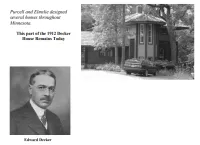
-

- Dave Decker
1939: The Decker Farm & Hill House – 1952 – 250 Bushaway Road
Excerpt from the History of Bushway Road and Its Neighborhood (1858-2009) by Irene Stemmer, of the Wayzata Heritage Preservation Board (HPB) as a means of preserving the history of the Bushaway Road and its neighborhood. 1939: The Decker Farm & Hill House – 1952 – 250 Bushaway Road In 1912, Edward W. Decker purchased eight and three quarter’s acres from Mary and George C. Andrews, executors of the estate of Thomas F. Andrews. Decker was president of Northwestern National Bank in Minneapolis. The house was designed by William Gray Purcell and George Grant Elmslie in 1912 in the prairie style of architecture for which they were noted. Purcell and Elmslie along with Frank Lloyd Wright worked under Louis Sullivan of Chicago, founder of the Prairie School of Architecture. Designed as a summer residence, the first floor had many large windows to let in light and create a feeling of bringing the outdoors inside that was a special feature of the Prairie School of Architecture. The house stood on the hill in the midst of the Big Woods that surrounded Lake Minnetonka. Leaded glass windows, electroliers and sawed wood beam decorated the interior throughout. A service building which contained the garage and servants quarters was connected to the main house by a breezeway. Edward William Decker was born in 1869 on a farm in Mower County near Austin, Minnesota. After graduating from Austin High School, he sought the broader business opportunities in Minneapolis where he worked his way up in financial institutions to become president of Northwestern National Bank. He also served on numerous boards and was a leader in the progress and prosperity of the community through the advancement of its commercial, industrial and financial interests. He married Susie May Spaulding in 1892 and they had a son and four daughters; Edward Spaulding; Margaret, who died in 1918; Katherine (Winton), Susan (Barrows) and Elizabeth. They were members of the Minneapolis and Minikahda Clubs and Minneapolis Society of Fine Arts. Decker enjoyed the house for twenty years, and eventually lost the place because of extreme financial difficulties during the 1930 Depression. The property was then purchased by Allan Janney Hill, of Janney, Semple, Hill and Company. Minneapolis hardware business. He razed the Decker house except for the breezeway and carriage house designed by Purcell & Elmslie. 1945- A. J. Hill purchases the Decker House in 1944 The house that replaced the Decker Prairie Style house was built by Allan Janney Hill, oldest son of Horace Mann Hill of the Janney, Semple, Hill Company. It was designed by Guy Crawford after an 18th century French Manor and attached to the breezeway and servants quarters (garage) still standing of the Decker’s house. The Hill house has two rooms that were originally built in France. The rooms were brought to America in the mid 1920’s for a New York apartment but never used. They remained in storage until an antique dealer purchased them for the Hill residence on Bushaway Road. The paneling from the days of King Louis XV reflects the political times of a more relaxed atmosphere after the Louis XIV era. The French rooms, with 14 foot ceilings, have elaborate carvings and exquisite over the doorway paintings. The master bedroom is painted paneling with gilded carved moldings and original murals that adorn each entrance are believed to be circa 1730. Alterations were made to the house by Harold Tearse who purchased the house from Hill in the late 1950s. They enlarged the kitchen and bedrooms. Mr. Tearse died in 1978 and Mrs. Tearse remained in the house until 2004 when it was sold to the present owner. Though it is difficult to believe the Purcell & Elmslie prairie style house would be razed, the 18th century French Manor that replaced it has a unique charm and history of its own. With the carriage house and walkway still remaining of the Purcell & Elmslie house and made a part of the newer Guy Crawford French design leaves us with the best of both architectural styles that continues to enhance the Bushaway neighborhood.
1939: The Decker Farm & Hill House – 1952 – 250 Bushaway Road
Excerpt from the History of Bushway Road and Its Neighborhood (1858-2009) by Irene Stemmer, of the Wayzata Heritage Preservation Board (HPB) as a means of preserving the history of the Bushaway Road and its neighborhood. 1939: The Decker Farm & Hill House – 1952 – 250 Bushaway Road In 1912, Edward W. Decker purchased eight and three quarter’s acres from Mary and George C. Andrews, executors of the estate of Thomas F. Andrews. Decker was president of Northwestern National Bank in Minneapolis. The house was designed by William Gray Purcell and George Grant Elmslie in 1912 in the prairie style of architecture for which they were noted. Purcell and Elmslie along with Frank Lloyd Wright worked under Louis Sullivan of Chicago, founder of the Prairie School of Architecture. Designed as a summer residence, the first floor had many large windows to let in light and create a feeling of bringing the outdoors inside that was a special feature of the Prairie School of Architecture. The house stood on the hill in the midst of the Big Woods that surrounded Lake Minnetonka. Leaded glass windows, electroliers and sawed wood beam decorated the interior throughout. A service building which contained the garage and servants quarters was connected to the main house by a breezeway. Edward William Decker was born in 1869 on a farm in Mower County near Austin, Minnesota. After graduating from Austin High School, he sought the broader business opportunities in Minneapolis where he worked his way up in financial institutions to become president of Northwestern National Bank. He also served on numerous boards and was a leader in the progress and prosperity of the community through the advancement of its commercial, industrial and financial interests. He married Susie May Spaulding in 1892 and they had a son and four daughters; Edward Spaulding; Margaret, who died in 1918; Katherine (Winton), Susan (Barrows) and Elizabeth. They were members of the Minneapolis and Minikahda Clubs and Minneapolis Society of Fine Arts. Decker enjoyed the house for twenty years, and eventually lost the place because of extreme financial difficulties during the 1930 Depression. The property was then purchased by Allan Janney Hill, of Janney, Semple, Hill and Company. Minneapolis hardware business. He razed the Decker house except for the breezeway and carriage house designed by Purcell & Elmslie. 1945- A. J. Hill purchases the Decker House in 1944 The house that replaced the Decker Prairie Style house was built by Allan Janney Hill, oldest son of Horace Mann Hill of the Janney, Semple, Hill Company. It was designed by Guy Crawford after an 18th century French Manor and attached to the breezeway and servants quarters (garage) still standing of the Decker’s house. The Hill house has two rooms that were originally built in France. The rooms were brought to America in the mid 1920’s for a New York apartment but never used. They remained in storage until an antique dealer purchased them for the Hill residence on Bushaway Road. The paneling from the days of King Louis XV reflects the political times of a more relaxed atmosphere after the Louis XIV era. The French rooms, with 14 foot ceilings, have elaborate carvings and exquisite over the doorway paintings. The master bedroom is painted paneling with gilded carved moldings and original murals that adorn each entrance are believed to be circa 1730. Alterations were made to the house by Harold Tearse who purchased the house from Hill in the late 1950s. They enlarged the kitchen and bedrooms. Mr. Tearse died in 1978 and Mrs. Tearse remained in the house until 2004 when it was sold to the present owner. Though it is difficult to believe the Purcell & Elmslie prairie style house would be razed, the 18th century French Manor that replaced it has a unique charm and history of its own. With the carriage house and walkway still remaining of the Purcell & Elmslie house and made a part of the newer Guy Crawford French design leaves us with the best of both architectural styles that continues to enhance the Bushaway neighborhood.

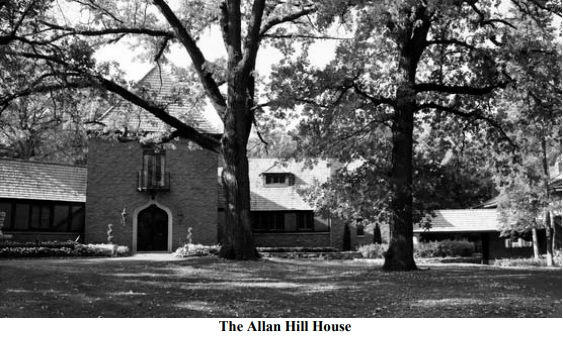
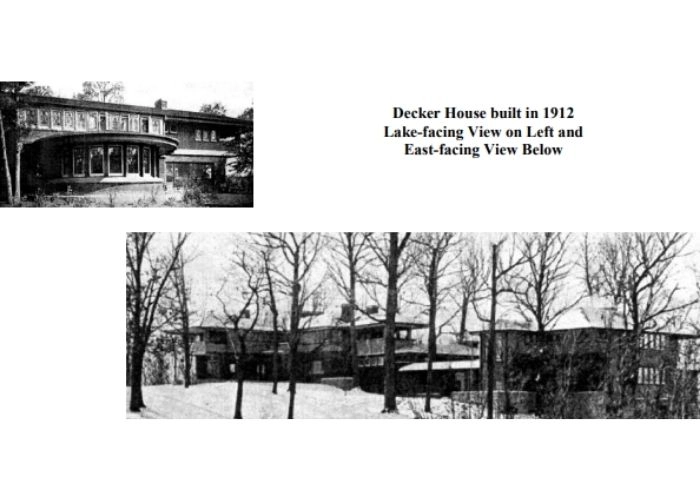



1939: The Decker Farm & Hill House – 1952 – 250 Bushaway Road
Excerpt from the History of Bushway Road and Its Neighborhood (1858-2009) by Irene Stemmer, of the Wayzata Heritage Preservation Board (HPB) as a means of preserving the history of the Bushaway Road and its neighborhood.1939: The Decker Farm & Hill House – 1952 – 250 Bushaway Road
In 1912, Edward W. Decker purchased eight and three quarter’s acres from Mary and George C. Andrews, executors of the estate of Thomas F. Andrews. Decker was president of Northwestern National Bank in Minneapolis. The house was designed by William Gray Purcell and George Grant Elmslie in 1912 in the prairie style of architecture for which they were noted. Purcell and Elmslie along with Frank Lloyd Wright worked under Louis Sullivan of Chicago, founder of the Prairie School of Architecture.
Designed as a summer residence, the first floor had many large windows to let in light and create a feeling of bringing the outdoors inside that was a special feature of the Prairie School of Architecture. The house stood on the hill in the midst of the Big Woods that surrounded Lake Minnetonka. Leaded glass windows, electroliers and sawed wood beam decorated the interior throughout. A service building which contained the garage and servants quarters was connected to the main house by a breezeway.
Edward William Decker was born in 1869 on a farm in Mower County near Austin, Minnesota. After graduating from Austin High School, he sought the broader business opportunities in Minneapolis where he worked his way up in financial institutions to become president of Northwestern National Bank. He also served on numerous boards and was a leader in the progress and prosperity of the community through the advancement of its commercial, industrial and financial interests. He married Susie May Spaulding in 1892 and they had a son and four daughters; Edward Spaulding; Margaret, who died in 1918; Katherine (Winton), Susan (Barrows) and Elizabeth. They were members of the Minneapolis and Minikahda Clubs and Minneapolis Society of Fine Arts.
Decker enjoyed the house for twenty years, and eventually lost the place because of extreme financial difficulties during the 1930 Depression. The property was then purchased by Allan Janney Hill, of Janney, Semple, Hill and Company. Minneapolis hardware business. He razed the Decker house except for the breezeway and carriage house designed by Purcell & Elmslie.
1945- A. J. Hill purchases the Decker House in 1944
The house that replaced the Decker Prairie Style house was built by Allan Janney Hill, oldest son of Horace Mann Hill of the Janney, Semple, Hill Company. It was designed by Guy Crawford after an 18th century French Manor and attached to the breezeway and servants quarters (garage) still standing of the Decker’s house.
The Hill house has two rooms that were originally built in France. The rooms were brought to America in the mid 1920’s for a New York apartment but never used. They remained in storage until an antique dealer purchased them for the Hill residence on Bushaway Road. The paneling from the days of King Louis XV reflects the political times of a more relaxed atmosphere after the Louis XIV era. The French rooms, with 14 foot ceilings, have elaborate carvings and exquisite over the doorway paintings. The master bedroom is painted paneling with gilded carved moldings and original murals that adorn each entrance are believed to be circa 1730.
Alterations were made to the house by Harold Tearse who purchased the house from Hill in the late 1950s. They enlarged the kitchen and bedrooms. Mr. Tearse died in 1978 and Mrs. Tearse remained in the house until 2004 when it was sold to the present owner.
Though it is difficult to believe the Purcell & Elmslie prairie style house would be razed, the 18th century French Manor that replaced it has a unique charm and history of its own. With the carriage house and walkway still remaining of the Purcell & Elmslie house and made a part of the newer Guy Crawford French design leaves us with the best of both architectural styles that continues to enhance the Bushaway neighborhood.
Posted Date
Mar 19, 2022
Historical Record Date
Sep 01, 2009
Source Name
Wayzata Heritage Preservation Board
Delete Story
Are you sure you want to delete this story?
Sep 01, 1941
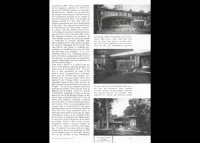
George Grant Elmslie and the Chicago Scene
George Grant Elmslie and the Chicago Scene Talbot Hamlin Pencil Points September 1941 Pictures of the Decker House
Sep 01, 1941


George Grant Elmslie and the Chicago Scene
George Grant Elmslie and the Chicago SceneTalbot Hamlin
Pencil Points September 1941
Pictures of the Decker House
Posted Date
Mar 19, 2022
Historical Record Date
Sep 01, 1941
Source Name
Organica
Source Website
Delete Story
Are you sure you want to delete this story?
Dec 01, 1913
Dec 01, 1913
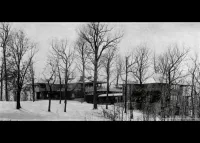
Decker House in Winter
South view of the Decker house in winter. Two schemes were prepared for this large countryside estate on a large lake near Minneapolis, Minnesota. The first one had a tower for "air picnics," which was omitted in the revised design.


Decker House in Winter
South view of the Decker house in winter. Two schemes were prepared for this large countryside estate on a large lake near Minneapolis, Minnesota. The first one had a tower for "air picnics," which was omitted in the revised design.Posted Date
Mar 19, 2022
Historical Record Date
Dec 01, 1913
Source Name
Organica
Source Website
Delete Story
Are you sure you want to delete this story?
Jun 01, 1913
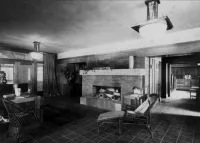
Edward W. Decker Summer Residence (Interior)
Interior pictures of the Decker Residence from the University of Minnesota Libraries, Northwest Architectural Archives.
Jun 01, 1913

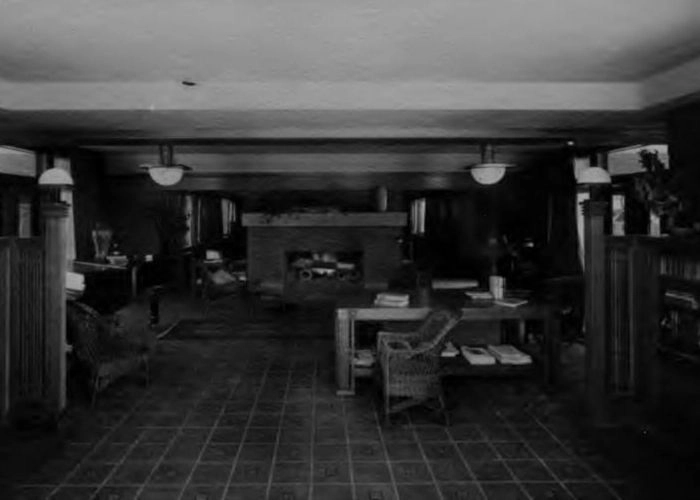
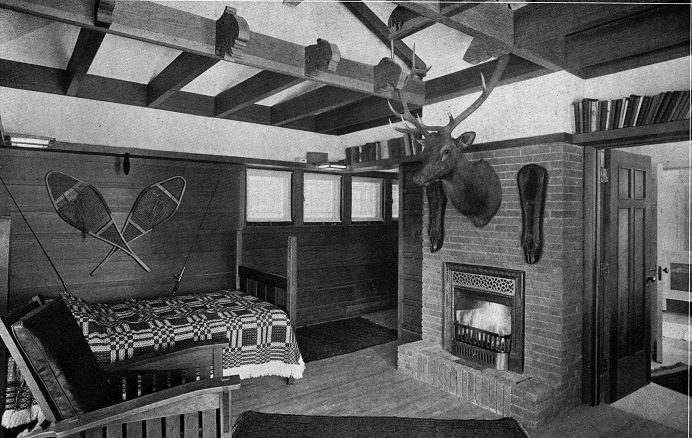
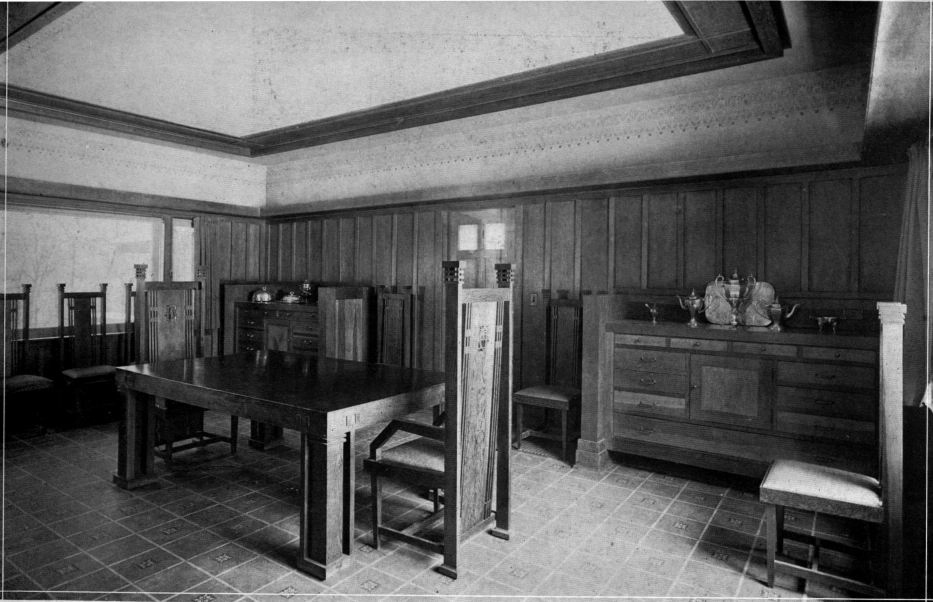




Edward W. Decker Summer Residence (Interior)
Interior pictures of the Decker Residence from the University of Minnesota Libraries, Northwest Architectural Archives.Posted Date
Mar 19, 2022
Historical Record Date
Jun 01, 1913
Source Name
University of Minnesota
Delete Story
Are you sure you want to delete this story?
Jun 01, 1913
Jun 01, 1913
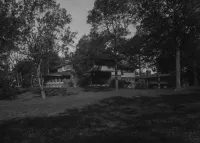
Edward W. Decker Summer Residence
The Decker Summer Residence. Pictures from the University of Minnesota Libraries, Northwest Architectural Archives.

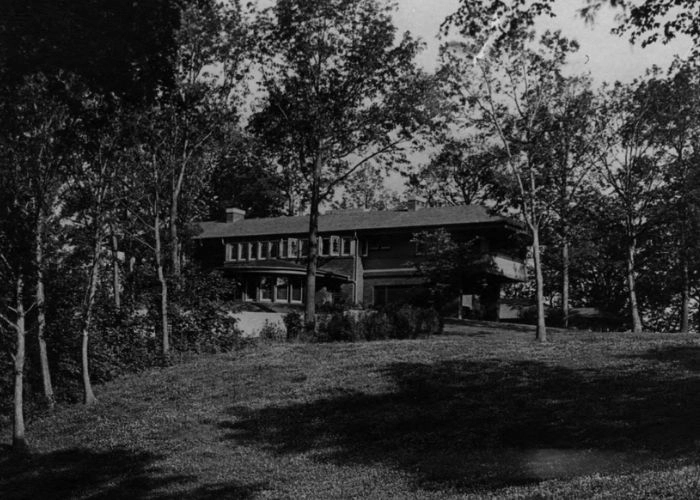
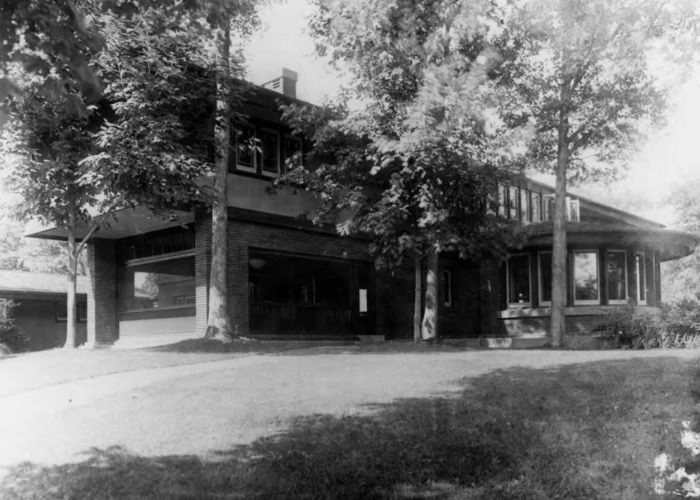
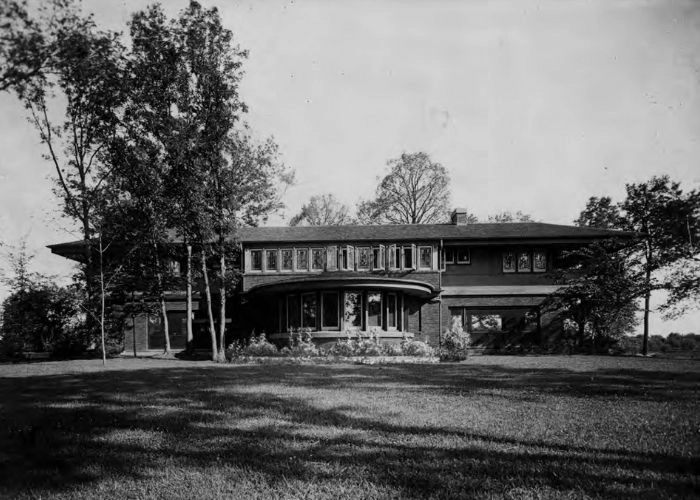
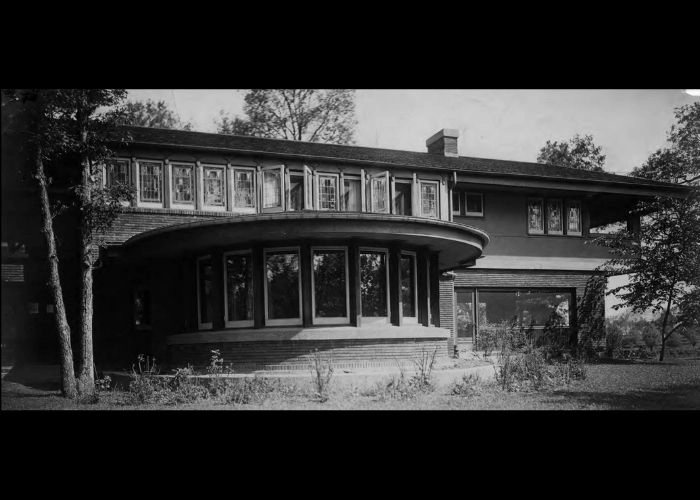
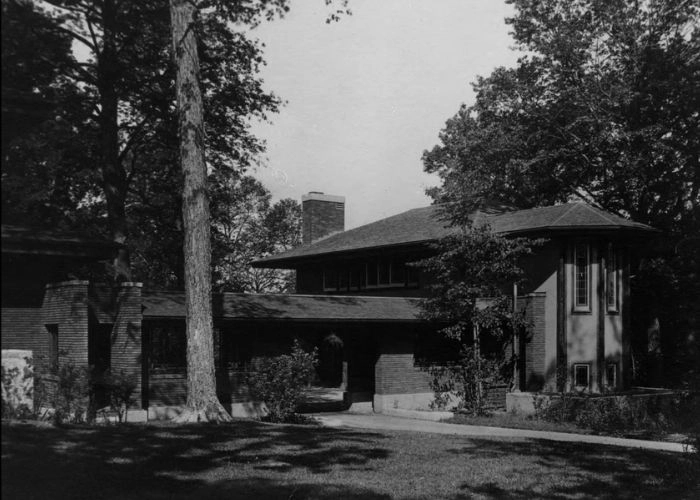
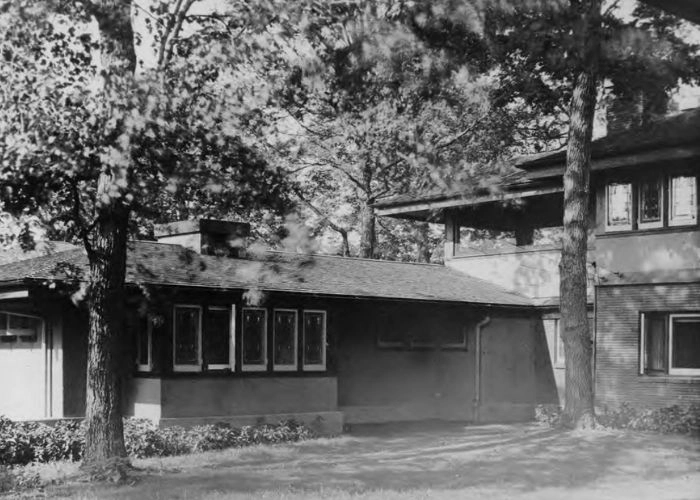
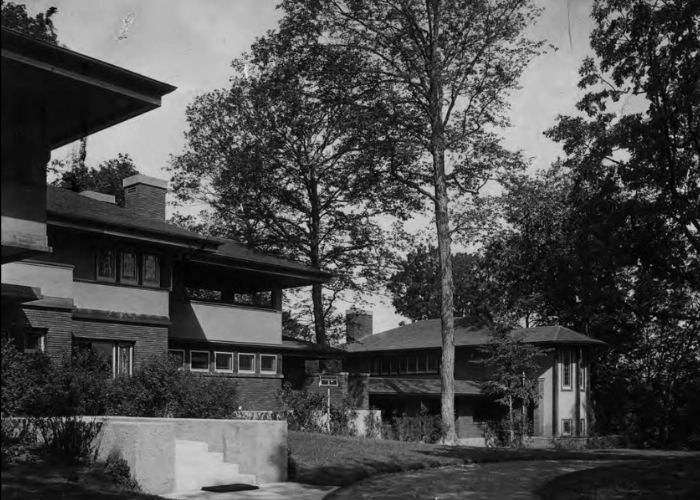

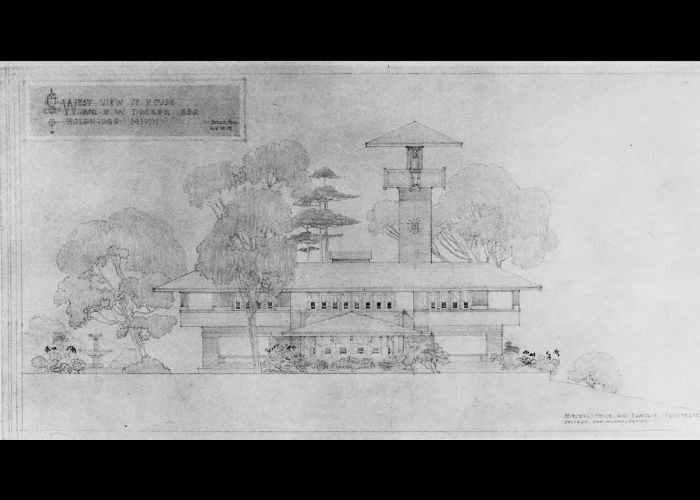








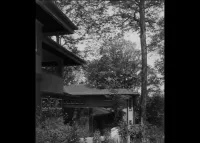

Edward W. Decker Summer Residence
The Decker Summer Residence. Pictures from the University of Minnesota Libraries, Northwest Architectural Archives.Posted Date
Mar 19, 2022
Historical Record Date
Jun 01, 1913
Source Name
University of Minnesota
Delete Story
Are you sure you want to delete this story?










